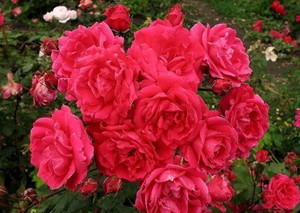 Park roses, the photos of which you see below, attract the eye with their beauty and aristocracy. No celebration is complete without these amazing plants. Today this well-known horticultural crop has tens of thousands of varieties, far superior to any other.
Park roses, the photos of which you see below, attract the eye with their beauty and aristocracy. No celebration is complete without these amazing plants. Today this well-known horticultural crop has tens of thousands of varieties, far superior to any other.
Thanks to the work of dozens of nurseries, their number is increasing every year. Such a name for park roses is conditional, this group includes both decorative species of rose hips, and centifolus and moss bred in the distant 16th century.
Description
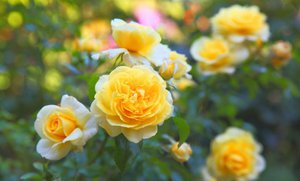 The bush reaches one and a half meters. The buds appear early, blooms profusely and for a long time (more than a month). The color of flowers is usually in the range from white to deep purple, orange or yellow colors are somewhat less common. In the photo below you can admire the beauty of terry park roses, one flower can consist of 150 petals, which is not inherent in any other type of roses.
The bush reaches one and a half meters. The buds appear early, blooms profusely and for a long time (more than a month). The color of flowers is usually in the range from white to deep purple, orange or yellow colors are somewhat less common. In the photo below you can admire the beauty of terry park roses, one flower can consist of 150 petals, which is not inherent in any other type of roses.
Park roses love spacious plantings, as they grow not only in height, but also in width. In France and England, plants do not need shelter, but in Russia, most varieties of park roses wait out closed during the cold season. In the middle lane, only species-specific roses close to wild can be left open, for example, gray and wrinkled rose, as well as species close to rose hips, but having double flowers.
Park roses are more unpretentious if bred in Canada... Such varieties are frost-resistant and do not need shelter, provided that the site:
- located in a relatively calm area,
- does not have high ground waters,
- gets sunshine,
- is processed correctly.
However, when sheltered, Canadians provide more abundant flowering.
Varieties of French, English, German selection of park roses require bending and shelter, among them are old and modern spray roses.
Classification
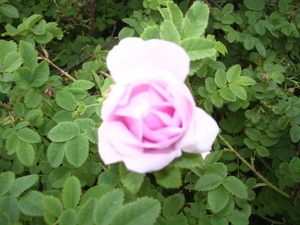 Park roses are divided into two groups:
Park roses are divided into two groups:
- With a single flowering.
- Repeated.
Park roses that bloom once to form buds require saving last year's shoots... If this is not done, they will not bloom. However, these varieties are resistant to cold conditions and often require no bending or cover. Such bushes can be found in the old cottages of every neighbor. Shoots of varieties "Poppius", "Wasagaming", "Minette" are often passed from hand to hand without a name. Other frost-resistant old varieties are presented more modestly and practically have no data.
Group of re-blooming is divided into three subgroups:
- Very frost-resistant rugoses (rose hybrids).
- Canadian roses resistant to cold environmental conditions. They are able to endure cold Russian winters without shelter, if conditions permit.
- In need of cover and ducking.
Rohoses are presented in many varieties. Most are similar to each other, some varieties require shelter. An unpretentious view is "Moje Hammarberg", which endures the winter and easily adapts to environmental conditions.
A large group of park roses is represented by Canadian selection. The best are Prairie Joy and Morden Centennial.
An excellent breeder of covering park roses is Englishman David Austin... He developed the Fisherman's Friend variety, which has won a large number of rose hearts all over the world. Also, many people love the varieties bred by Cordes, Meiyan, Tantau. The most beautiful among the re-blooming old varieties are: Bourbon, remontant.
Re-blooming
Among the most famous varieties, the following crops stand out:
A. Mackenzie scrub (Canada)
The bush is powerful, straight up to two meters, moderately thorny, the leaves consist of 7 leaves, matte structure. It blooms with soft pink-red double inflorescences, consisting of 40-50 petals. The size is medium, the shape resembles an old one, the flowers last for a long time, fading in the sun. The bush in a flowering outfit is very beautiful, but has no scent. But it pleases the eye all summer, rarely gets sick. Reproduction takes place by cuttings. Withstands frost up to 40 degrees, you do not need to cover. In the spring, pruning of dead shoots should be performed, which does not affect abundant flowering. Provide more abundant flowering by covering the bush and bending down the shoots. Planting is best done in the background, since the plant is tall.
Fisherman's Friend® scrub (UK)
Flowers are purple-crimson or purple in color, densely double with a velvety effect, large. Usually solitary, persist up to 5 days, tolerate dampness well. They have a strong pleasant aroma. They are in perfect harmony with glossy, dark green, slightly "wrinkled" beautiful leaves, which consist of 7 leaves. Shoots and even leaves on the back are covered with sharp thorns, so it is better not to approach the rose without gloves. The height of the bush is from 1 meter to 1.2. Needs disease prevention in early summer, in winter - in shelter.
Moje Hammarberg Hybrid Rugosa (Sweden)
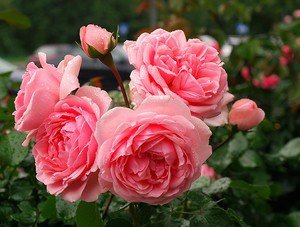 Flowers are large double dark pink with a rich aroma. A single flower does not please the eye for long, rain can damage the petals. The leaves consist of 8 leaflets, moderately shiny, wrinkled. Spines are densely arranged. The height of the bush reaches 1.5 meters. It does not need shelter, since it is not prone to freezing. Does not require special care, diseases are absent, reproduction occurs by shoots.
Flowers are large double dark pink with a rich aroma. A single flower does not please the eye for long, rain can damage the petals. The leaves consist of 8 leaflets, moderately shiny, wrinkled. Spines are densely arranged. The height of the bush reaches 1.5 meters. It does not need shelter, since it is not prone to freezing. Does not require special care, diseases are absent, reproduction occurs by shoots.
Morden Centennial Scrub (Canada)
The height of the bush reaches 1.2 meters. Terry flowers with 45 petals, 8 cm in diameter, bright pink flowers are collected in inflorescences of 3 pieces. This rose smells weak. At the beginning of the opening of the bud, the flowers are very beautiful, but at the end they open the middle, in rare cases this does not happen. Abundant flowering occurs in June and August-September, after 5 days the flower withers. Flowers should be cut off as the petals fly around, if this is not done, fruits will appear, which will not affect flowering in the best way.
The leaves consist of 7 leaves, large, matte structure, spines on the shoots are rare. Diseases are extremely rare. Planting and reproduction takes place by cuttings without much hassle. Withstands frosts up to 45 degrees, but if you cover and bend down, it will bloom more abundantly.
Prairie Joy scrub (Canada)
It grows in a tall and dense bush, reaching 1.5 meters. The leaves have a matte structure, young have a burgundy color, which turns into a dark green bluish hue, consist of 7 leaves. Not very prickly, as there are few thorns. Blooms throughout the summer with delicate pink double flowers of a beautiful shape that appear in inflorescences. The flowers are kept on the shoots for about 5 days, the rain has a detrimental effect on them, which is why decay is not excluded. They have a weak aroma. To stimulate re-flowering, wilted flowers are removed. The bush is not susceptible to disease. Planting is used for hedges. Withstands up to 40 degrees, but blooms more abundantly when covered and ducked.
Blooming once
Among park roses that bloom once, the most popular varieties are:
Centifolia (France)
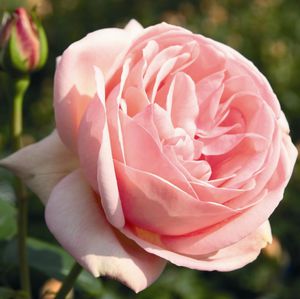 During the month when flowering occurs, the pale pink color of the flowers turns almost white due to burnout.At first, the flower has a goblet shape, after which the stamens open to the eye. Falls off after about 4 days. It blooms very profusely, the aroma is felt several meters away. Often the buds are affected by gray rot, but due to the abundance of flowers, it is invisible. The leaves are matte, light green in color.
During the month when flowering occurs, the pale pink color of the flowers turns almost white due to burnout.At first, the flower has a goblet shape, after which the stamens open to the eye. Falls off after about 4 days. It blooms very profusely, the aroma is felt several meters away. Often the buds are affected by gray rot, but due to the abundance of flowers, it is invisible. The leaves are matte, light green in color.
The thorns are small, infrequent. If you touch this park rose without gloves, splinters remain on the skin. Fruits are formed but not ripe. The bush reaches 1.5 meters. You do not need to cover, reproduction occurs by shoots. Planting is done along the fence, as it grows huge and does not require special care.
Poppius scrub
Flowers with a strong aroma, semi-double, medium-sized, pink in color. Leaves consist of 8 leaves, matte structure. The bush is very thorny. The height reaches more than 1.5 meters, does not need support. It blooms early during the crescent, with fruit set, which, when ripe, become maroon in color. Frost-resistant, you don't need to cover. Reproduction occurs by shoots. Due to its size, this variety of park rose can be planted along the fence.
Pimpinellifolia plena
A creamy white rose with a strong aroma and semi-double flowers. Reaches a height of 1.5 meters, does not need support. It blooms once for 12 days with fruit ovaries that ripen to almost black. The leaves consist of 8 leaves of a matte structure. The bush is covered with frequent thorns. Frost-resistant variety, does not require shelter. Propagated by shoots. Landing is done along the fence.
Hybrid Rugosa (Canada)
This variety has beautiful, pink, double flowers with a strong aroma. Abundant flowering throughout the month, even if the buds are affected by gray mold, which occurs in a rainy summer. Frosted slightly wrinkled leaves, shoots with dense thorns. It grows to almost 2 meters in length. She does not need shelter for the winter, she tolerates frosts. Reproduction occurs by shoots, planting is done along the fence.
Care: tips
For roses to please their appearance, you should know some of the nuances:
 Park roses are planted with additional space for shelter in the cold season, as well as so that there is an opportunity to approach them.
Park roses are planted with additional space for shelter in the cold season, as well as so that there is an opportunity to approach them.- Do not plant strong-smelling plants next to the rose bush so as not to interrupt their subtle scent.
- Climbing roses usually bloom from the side, so to ensure abundant flowering, which begins at the very bottom of the shoot, the main stems should be placed in a horizontal position.
- If shoots are formed without setting flowers, then you should know the sources of the problem in order to take the necessary measures. Certain varieties may be the reasons. These shoots are laid on the ground and pinned, which stimulates the formation of buds. The second reason may be poor care without the necessary nutrition, feeding and improper placement, when there is a lack of sun. Also, the culprits can be pests that suck the juice from young shoots, which negatively affects the setting of buds. If there are no flower buds, the shoot is pruned a little, which becomes an incentive for their formation.
- As a prophylaxis against pests, use a decoction of field horsetail or an infusion of nettle, which help to strengthen tissues, which affects the plant's resistance to pests. Rose petals usually love thrips; spraying with chamomile-based pharmaceutical and cold water will relieve them.
- Ground cover and miniature varieties of roses adapt well to the cold climate of Russia.
- To prepare the shoots for winter and better endure frost, do not prune from August.
- Hillow the rose before the onset of cold weather to a height of 20 cm and cut off all young shoots. Wrap with lutrasil to protect from sudden frost, in spring it will protect against burns. A lapnik is covered after the onset of a stable cold snap to -8 degrees.
- If the shoot is vigorous and does not want to bend, you need to undermine the plant from the right side and carefully set the direction, then gently tilt it.
- If the temperature is above 8 degrees with a minus sign, then an outlet should be made in the shelter. This is necessary to prevent the development of mold.
- Park roses love when they are fertilized with an infusion of ash, which is cooked for 4 hours. Before watering, the ground around the bush is loosened.
Beautiful park roses will delight you with abundant flowering for a long time, if you provide competent care, find a sunny place with breathable soil.
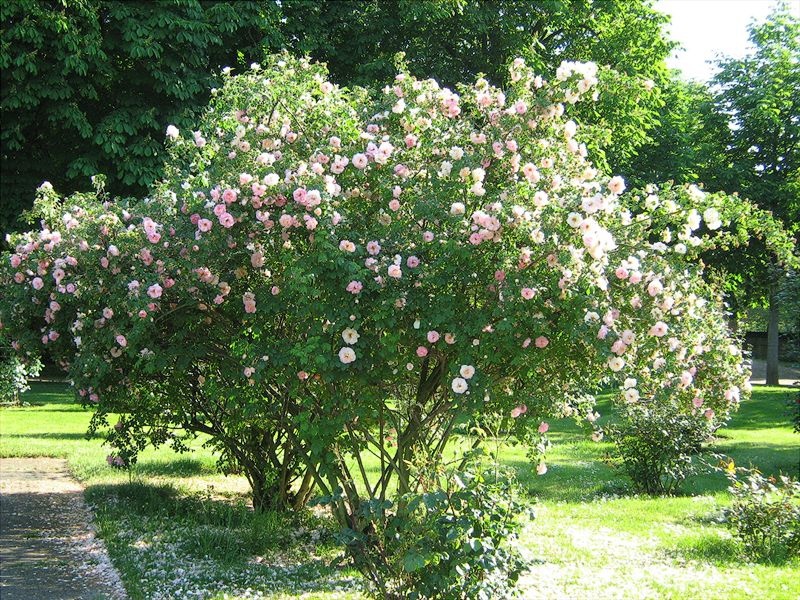
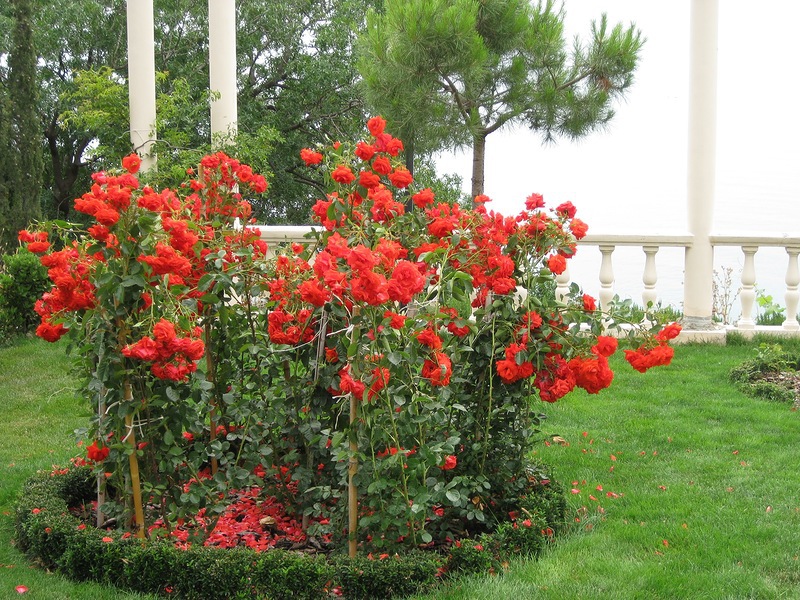
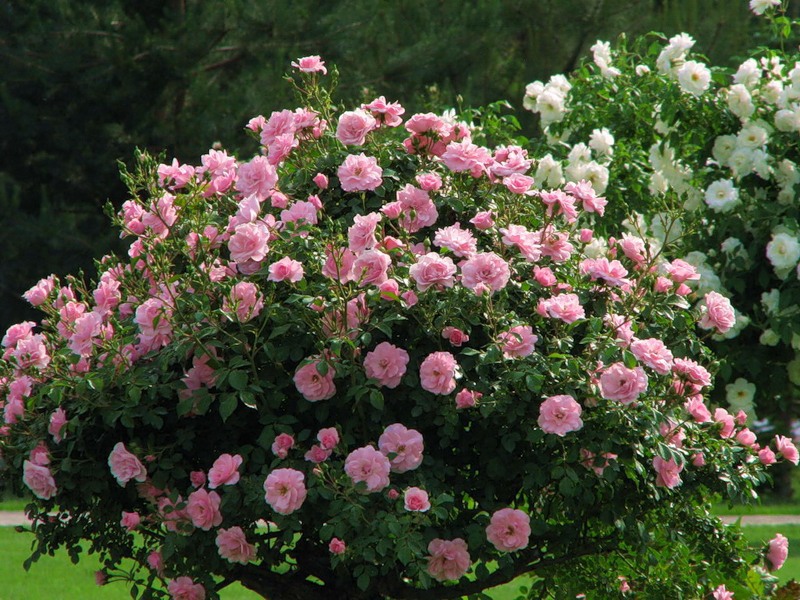
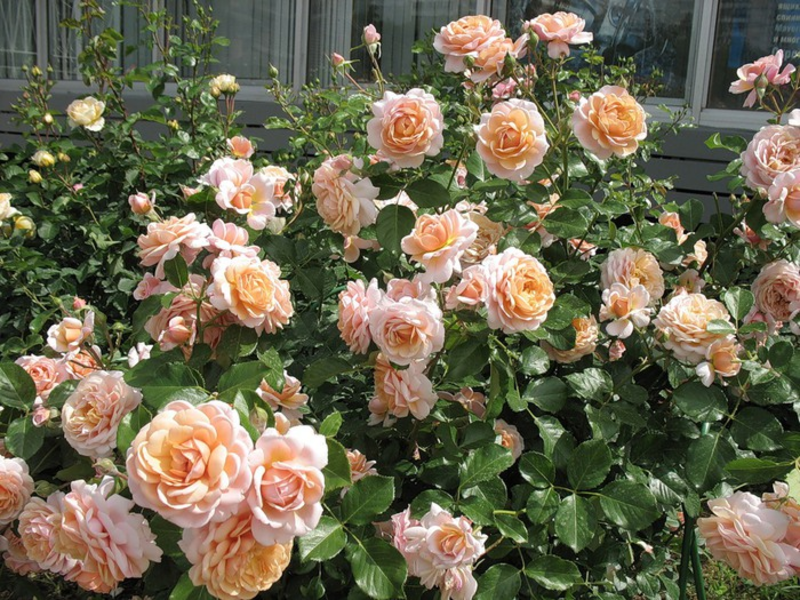
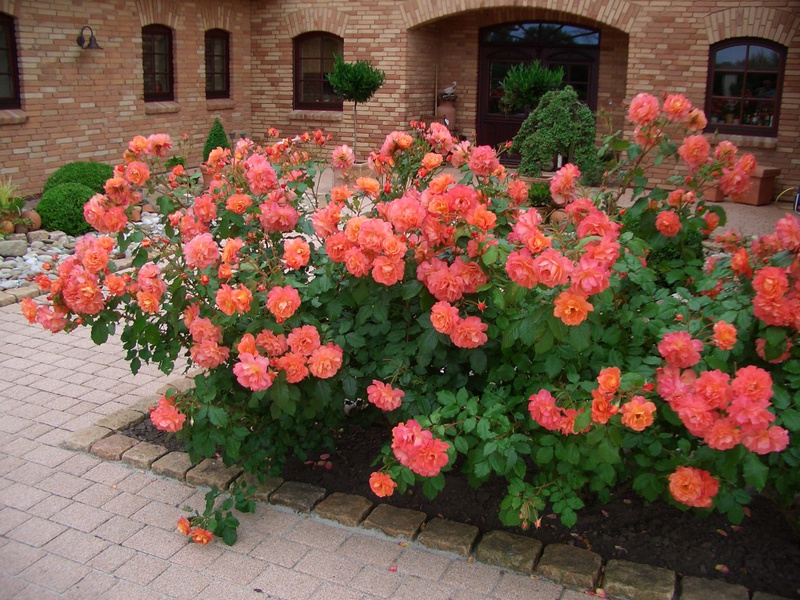
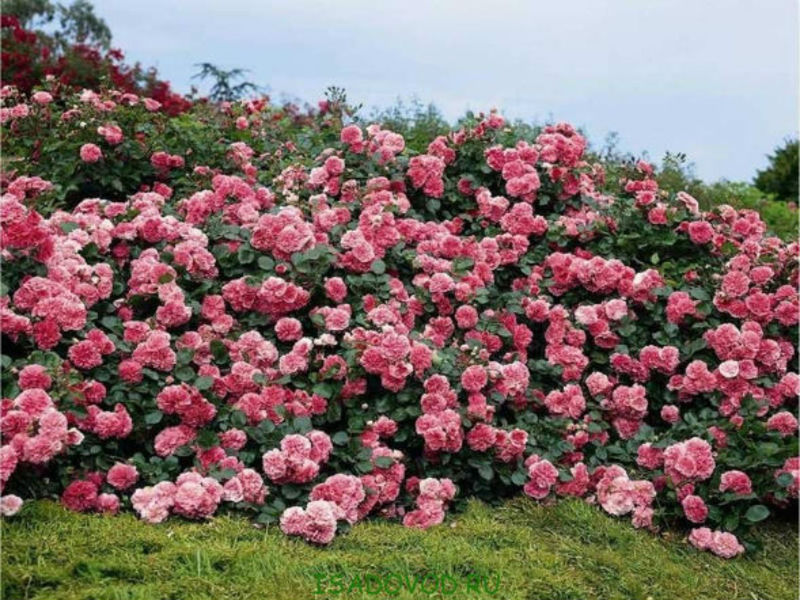
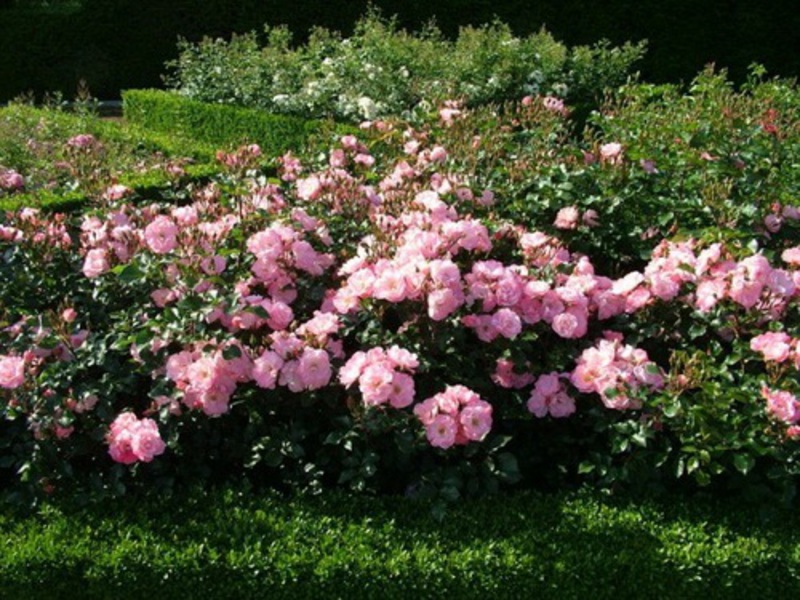
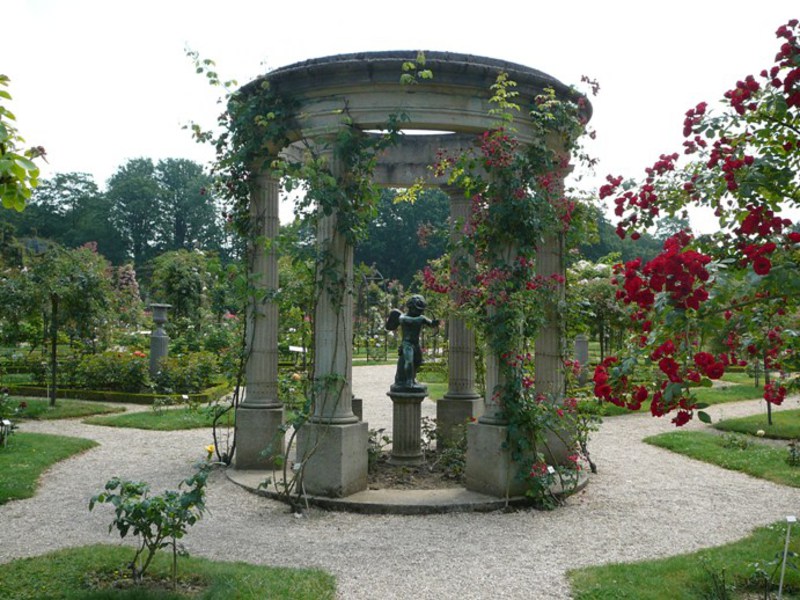
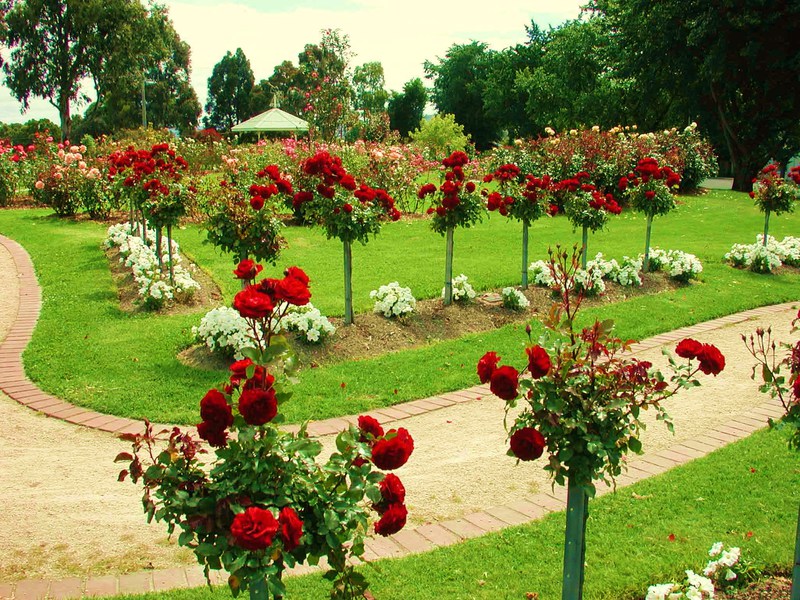
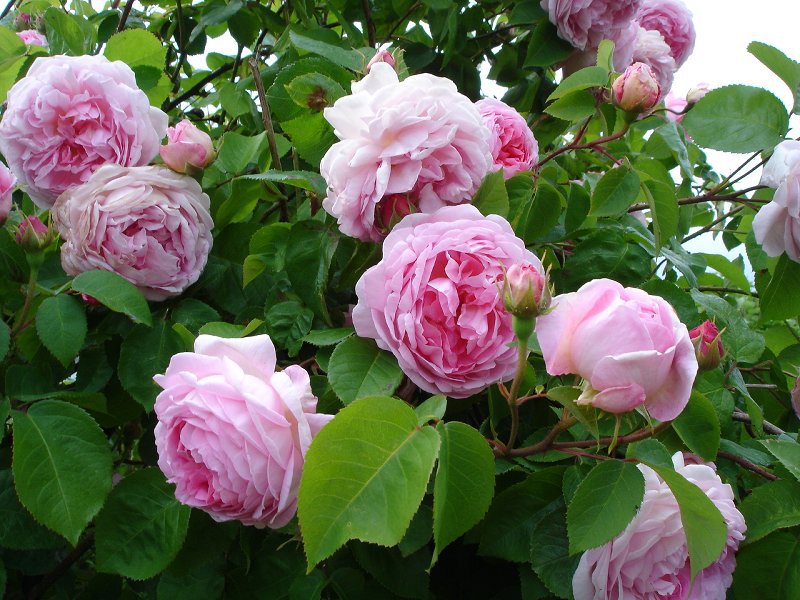
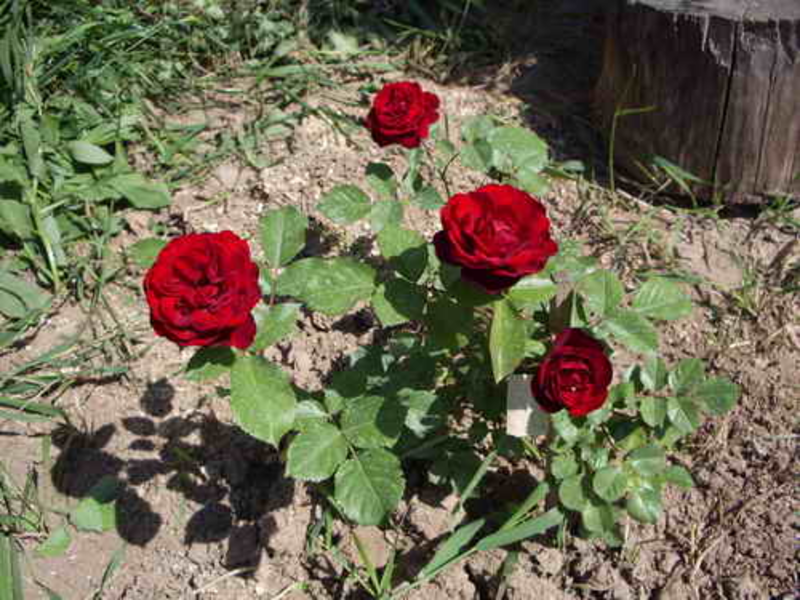
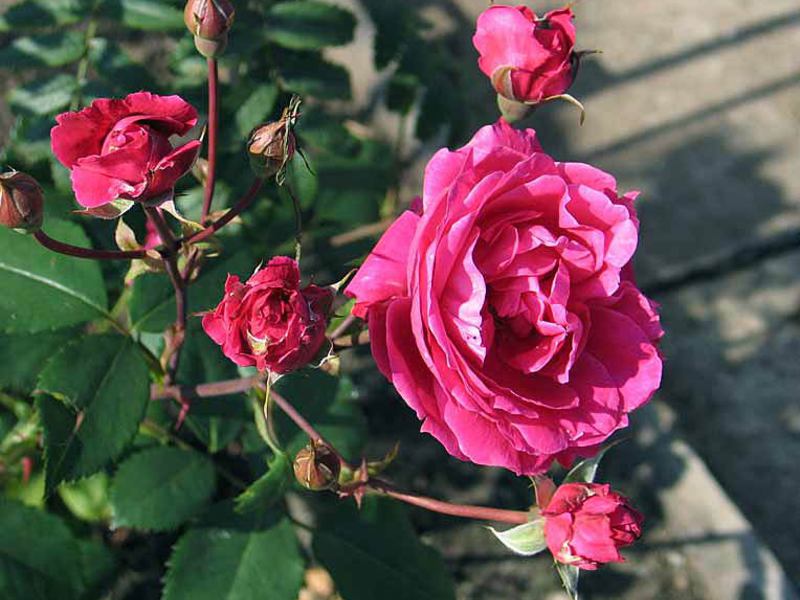
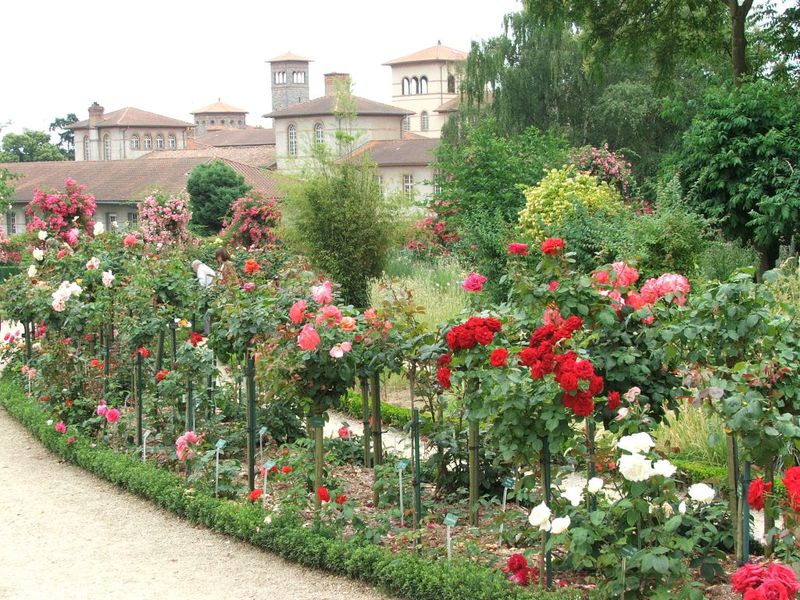
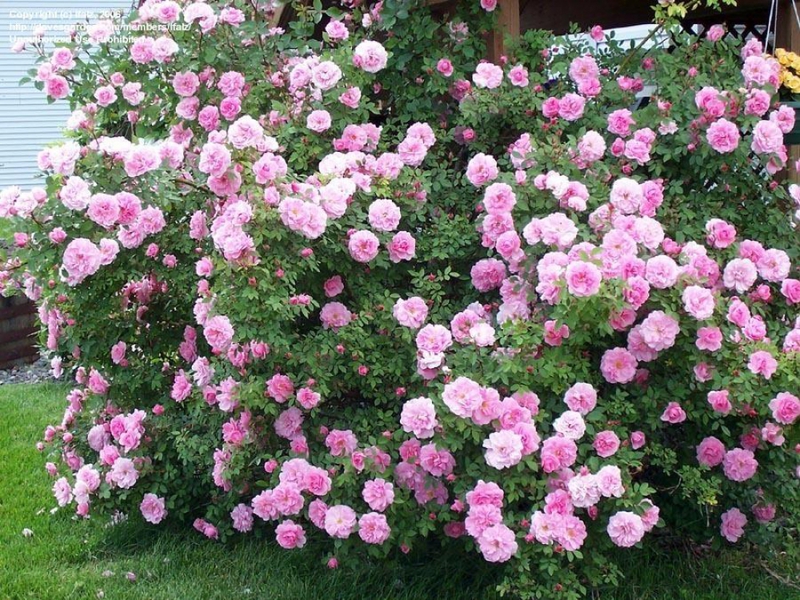
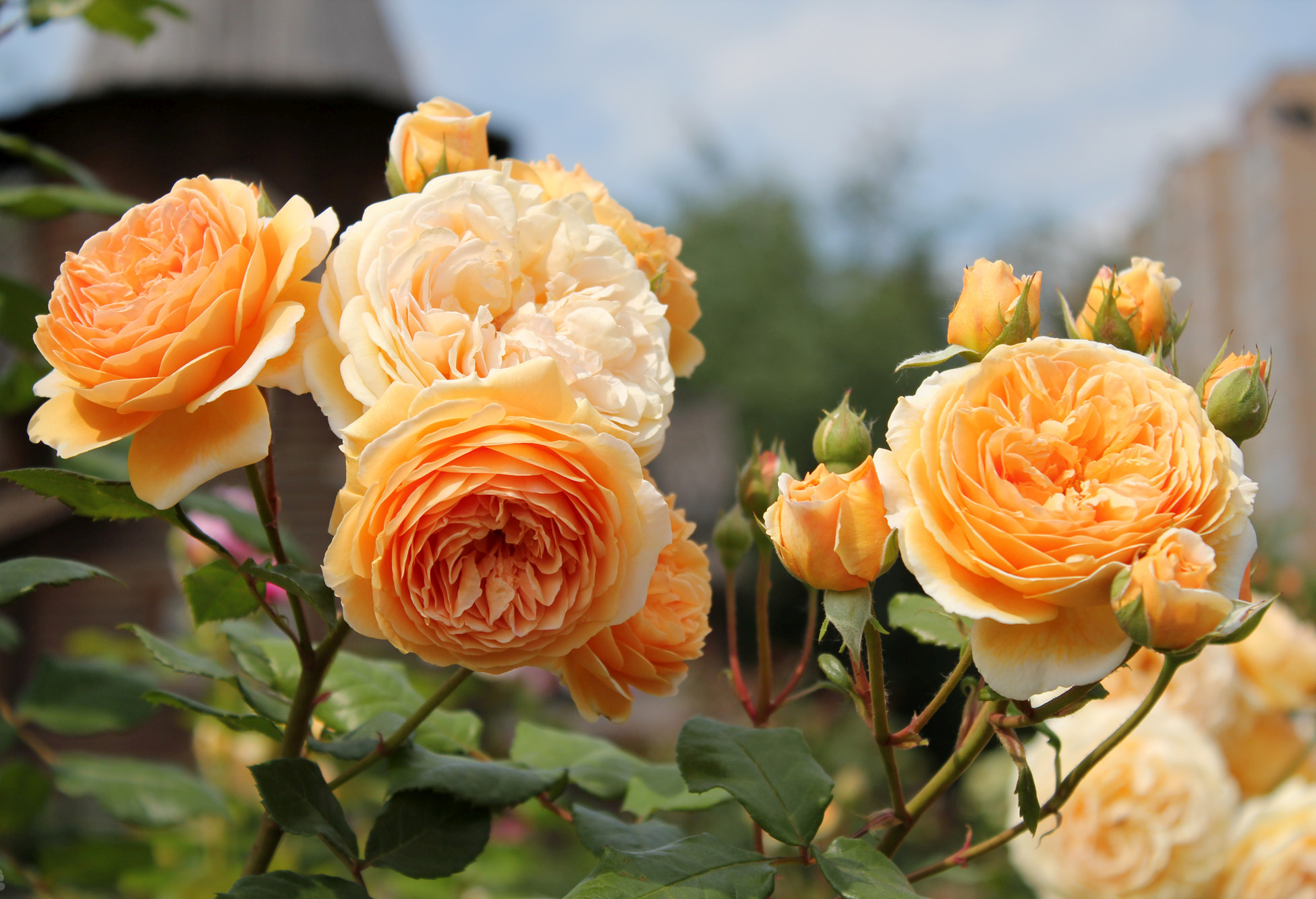
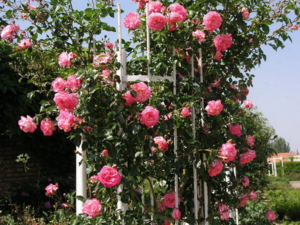

1 comment